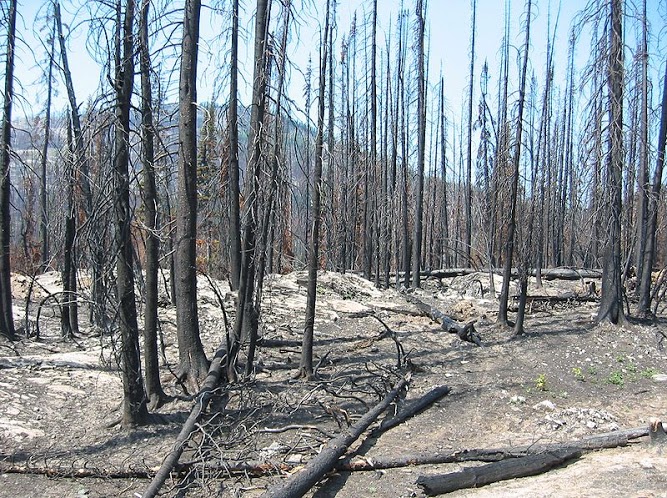
Showers, along with a few strong to severe thunderstorms, are expected from the Great Lakes, New England and southward into the Ohio and Tennessee Valleys. In the wake of this system, a stronger storm is expected to track from the Pacific Northwest, Plains and through the Eastern U.S. this weekend. Strong winds, showers and a larger drop in temperatures are expected this weekend into Monday. Read More >
 |
||||||||||
|
||||||||||
| Flood Hazards | ||||||||||
|
It floods somewhere in the United States or its territories nearly every day of the year. Flooding causes more damage in the U.S. than any other weather-related event, with an average of eight billion dollars a year and an average of ninety-five fatalities per year in the past thirty years. Flooding can occur in any of the fifty states or U.S. territories at anytime of the year, sometimes very quickly. Being prepared in advance and knowing a few flood safety tips will help you and your family survive a flood if it happens in your area. A flood is defined as any high flow, overflow, or inundation of water that causes or threatens damage. Flooding can occur with prolonged rainfall over several days, intense rainfall over a short period of time, or when water from an existing source moves too quickly (i.e., snowmelt, dam break, etc.). Brief descriptions of the various types of flooding you may experience are found below. More information about these flood hazards can be found on the NWS Flood Safety Website at https://www.floodsafety.noaa.gov. |
||||||||||
| Flash Flooding | ||||||||||
| Flash flooding is a rapid and extreme flow of high water into a normally dry area, or a rapid water level rise in a stream or creek above a predetermined flood level, beginning within six hours of the causative event (i.e., intense rainfall, dam failure, ice jam). | ||||||||||
| River Flooding | ||||||||||
|
River flooding occurs when rivers rise and overflow their banks inundating areas that are normally dry. The NWS uses different categories to convey the expected flood severity. These categories are: Minor Flooding
Moderate Flooding
Major Flooding
Record Flooding
Flood categories do not exist for all forecast points or flood locations. That doesn't mean they don't flood! Contact the NWS for more information on flood categories. |
||||||||||
| Tropical Systems and Coastal Flooding | ||||||||||
|
At any time of year, a storm from over the ocean can bring heavy precipitation to U.S. coasts. Whether such a storm is tropical or not, prolonged periods of heavy precipitation can cause freshwater flooding in coastal areas, as well as farther inland as the storm moves onshore. In addition to the freshwater flood threat, tropical systems and nor'easters can bring the threat of coastal flooding from storm surge. Storm surge is often the greatest threat to life and property from a tropical cyclone. In the past, large death tolls have resulted from the rise of the ocean associated with many of the major hurricanes that have made landfall. Hurricane Katrina in 2005 is a prime example of the damage and devastation that can be caused by storm surge. At least 1500 people lost their lives during Hurricane Katrina, and many of these deaths occurred directly, or indirectly, as a result of storm surge. |
||||||||||
| Burn Scars/Debris Flows | ||||||||||
 |
Wildfires burn away the vegetation of an area, leaving behind bare ground that tends to repel water. When rain falls, it runs off a burn scar towards a low lying area, sometimes carrying branches, soil and other debris along with it. Without vegetation to hold the soil in place, flooding can produce mud and debris flows. | |||||||||
| Snowmelt | ||||||||||
| Flooding due to snowmelt most often occurs in the spring when warming temperatures quickly melt the snow. The water runs off the still partially frozen or already saturated ground into nearby streams and rivers, causing them to rapidly rise and sometimes overflow their banks. | ||||||||||
| Ice and Debris Jam | ||||||||||
| A backup of water into surrounding areas can occur when a river or stream is blocked by a build-up of ice or other debris. | ||||||||||
| Dry Wash | ||||||||||
| When heavy rain falls over dry land, the water rushes towards low-lying areas, which may include dried up canyon or stream beds. This can quickly turn a dry channel into a raging river. | ||||||||||
| Dam Break and Levee Failure | ||||||||||
| A break or failure can occur with little to no warning. Most often they are caused by water overtopping the structure, excessive seepage through the surrounding ground, or a structural failure. | ||||||||||
|
Understanding the different flood hazards and knowing the actions to take before, during, and afterwards can help you protect your life, the lives of your loved ones, and your property. Prepare now by visiting www.floodsafety.noaa.gov. |
||||||||||
| Back to Top | ||||||||||
|
|
||||||||||